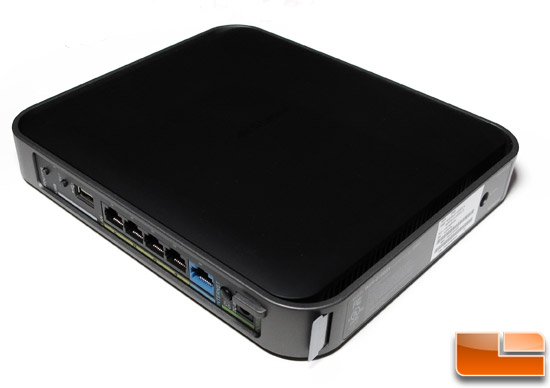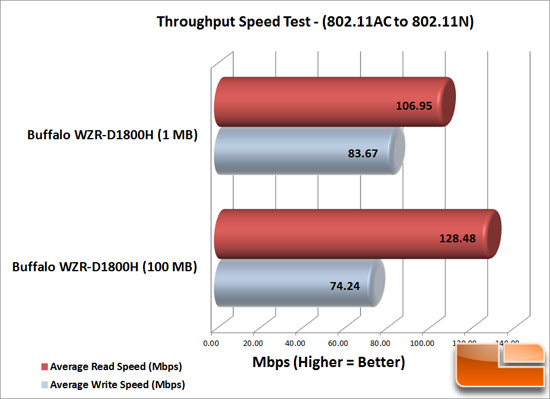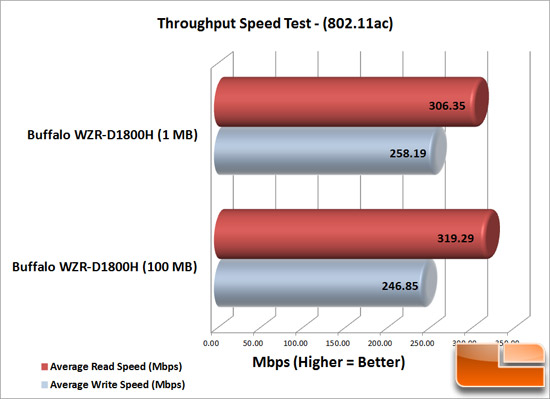Buffalo Air Station AC1300 N900 802.11ac Wireless Router Review
By
Air Station WZR-D1800H 802.11ac Performance Numbers


Test Results: It turns out that by connecting to an Wireless-AC router does improve your speeds slightly. Comparing the numbers of our 802.11n connecting to the Buffalo Air Station WZR-D1800H show us an increase in average Read/Write speeds for both sized packets tested. The performance with 1 MB data packets is up slightly but the biggest jump was in our multimedia-sized 100MB packets with a 20% increase in Read speeds. Not bad.
We turned off the built-in Wi-Fi on our laptop and then paired a Netgear R6300 802.11ac Router configured as a bridge to our Buffalo Air Station. We are now ready to see what a true 802.11ac wireless network can do. Again we used LAN Speed Test to check the throughput of our 1MB and 100MB data packets.

Test Results: Moving over to 802.11ac certainly makes a difference! While not exactly Gigabit speeds, we saw a 186% increase in average read speeds and a 232% increase in average write speeds. Another result that we didnt show in the above chart was that these speeds were consistent when we varied the distance. Whether the Buffalo router was close to our bridge or 25-feet away (which is our normal testing distance), the speeds were consistent.

Comments are closed.